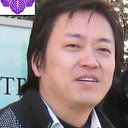Comparison of magnetic resonance imaging with invasive histological findings of Langerhans cell histiocytosis.
Mots clés
Abstrait
Due to the rarity of skull Langerhans cell histiocytosis (LCH), correlations between abnormalities on magnetic resonance imaging (MRI) and pathological findings have not been fully evaluated. Only a few reports have as yet compared MRI of LCH infiltration and histological diagnostic features. A 22-year-old man with an unremarkable past medical history presented with headache followed by a nodular mass in the right parietal area. Gadolinium (Gd)-enhanced T1-weighted images showed a "mushroom-shaped" extension, extending from the subcutaneous to the intracranial space. The galeal tissue, the dura mater, and the cranium adjacent to the lesion showed enhancement on Gd-enhanced T1-weighted MRI. Histologically, diagnosis was LCH, with immunohistochemical positivity for S-100, CD68, and CD1a, and showed a MIB-1 labeling index of 29.5%. By immunostaining, we confirmed LCH cells to be present in the galea with Gd enhancement and the skull without Gd enhancement on MRI. LCH cells might exist in the marginal cranium, if MRI shows only slight intensity change without Gd enhancement. Further evaluation to determine pathologically proven extent of LCH and its relation with neuroradiological diagnosis as well as clinical outcome is needed to understand heterogeneous response to surgical and/or nonsurgical treatment in LCH.




